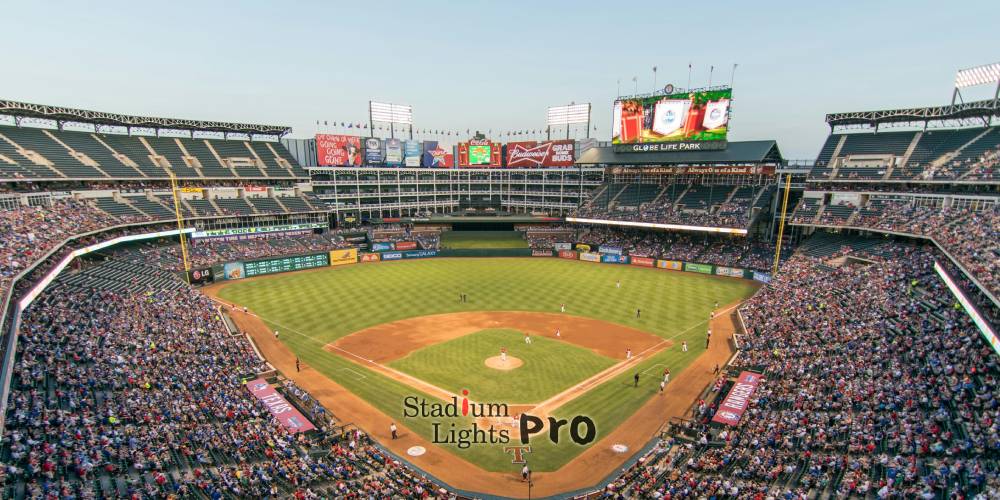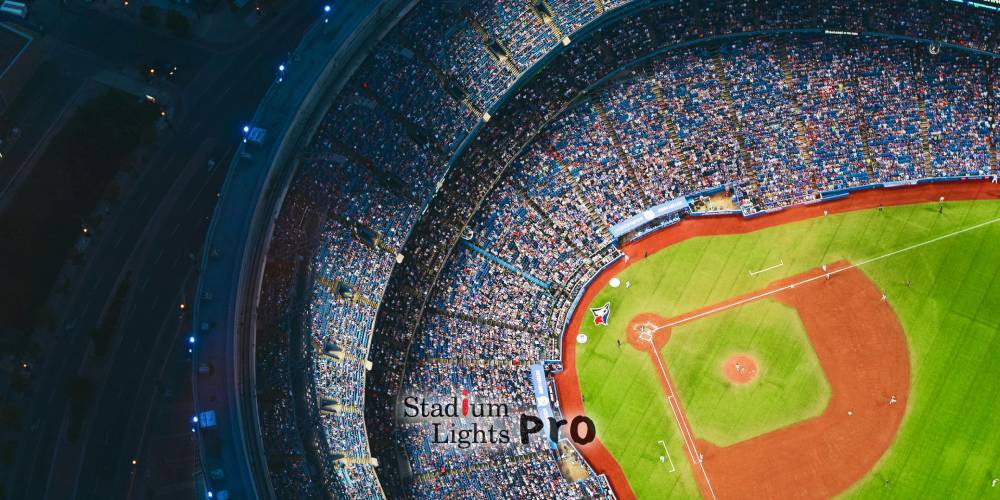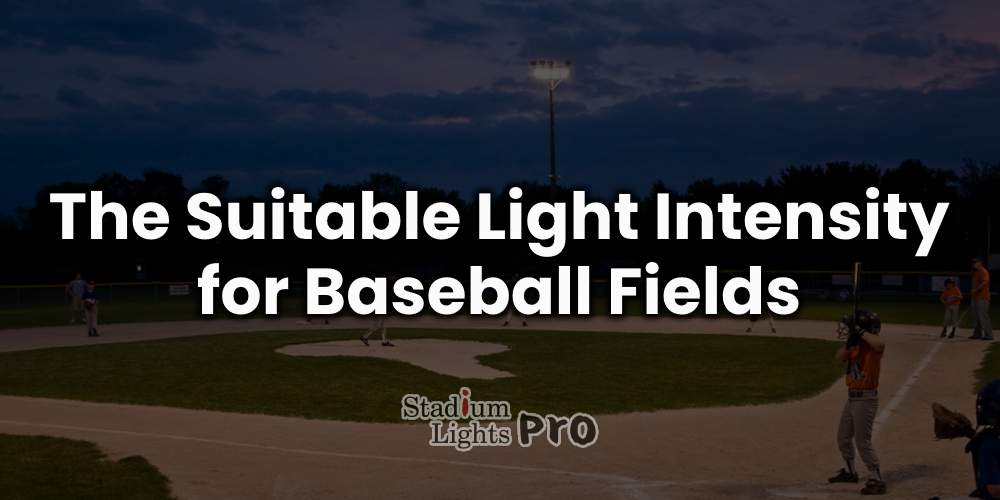Determining suitable light intensity in baseball fields with LED lighting is crucial for harnessing the full potential of this technology while meeting the specific needs of the sport. LED lights offer flexibility in adjusting light intensity, enabling precise control to achieve optimal brightness levels for different playing conditions and events. By establishing appropriate light intensity standards, stakeholders ensure consistent and high-quality illumination that enhances gameplay, reduces glare, and improves safety. Furthermore, understanding the capabilities of LED lighting systems allows for efficient utilization of resources, maximizing the benefits of energy savings and longevity. Ultimately, the purpose of determining suitable light intensity with LED lighting is to create a superior sports environment that enhances performance, enjoyment, and sustainability on baseball fields.
Table of Contents
ToggleFactors influencing light intensity requirements

Several factors influence the light intensity requirements in LED-lit baseball fields, encompassing the field’s size and layout, the level of play, environmental conditions, regulatory standards, and technological advancements. Field dimensions and configurations dictate the necessary brightness and uniformity across the playing area, with larger fields often requiring higher intensity lighting for optimal visibility. Different levels of play, from professional leagues to recreational games, may have varying intensity requirements to suit player needs and performance standards. Environmental factors such as weather conditions and surrounding ambient lighting sources contribute to the design considerations, ensuring consistent performance and safety in all conditions. Regulatory standards, including those set by sports organizations and local building codes, establish minimum illumination levels and glare limitations to maintain player safety and compliance. Advancements in LED technology, such as improved brightness, efficiency, and controllability, continually influence light intensity requirements, offering opportunities for enhanced performance and energy savings in baseball field lighting systems.
Field size and layout
Field size and layout significantly influence LED lighting designs in baseball fields. The dimensions and layout of the field dictate the distribution and intensity of light needed for optimal visibility during gameplay. Larger fields demand higher light intensities to ensure even illumination across the outfield, infield, and baselines. Careful consideration of the height and positioning of light poles is essential to minimize shadows and guarantee consistent coverage throughout the field. Obstacles like bleachers, fences, or adjacent structures can impact light distribution, necessitating strategic placement of LED fixtures to avoid glare and shadows. Understanding the unique characteristics of each field allows for tailored lighting solutions that meet the specific needs of players and spectators, providing sufficient brightness and visibility for an enhanced baseball experience.
Level of play
The level of play, whether professional, amateur, or recreational, is a critical consideration in LED lighting setups for baseball fields. Each level has distinct requirements and expectations regarding lighting intensity, uniformity, and quality. Professional leagues typically demand high-performance lighting systems to meet stringent standards for televised games and ensure optimal visibility for elite athletes. Amateur leagues may have slightly less demanding requirements but still prioritize adequate illumination for competitive play and player safety. Recreational fields, used for casual games and community events, may have more flexible lighting needs but still require sufficient brightness and uniformity for enjoyable gameplay. Tailoring LED lighting solutions to the specific level of play ensures an optimal experience for players and spectators alike.
Environmental conditions
Environmental conditions, including weather and surrounding lighting, play a significant role in the design and performance of LED lighting systems for baseball fields. Outdoor fields are subject to varying weather conditions such as rain, wind, and temperature fluctuations, which can affect the durability and reliability of lighting fixtures. LED lights must be weather-resistant and able to maintain consistent performance under adverse conditions to ensure uninterrupted gameplay. Additionally, surrounding ambient lighting sources, such as streetlights or neighboring stadium lights, can impact the overall brightness and uniformity on the baseball field. Careful consideration of these environmental factors is essential to design lighting solutions that provide optimal visibility and safety for players and spectators, regardless of external conditions.
Regulatory standards
Regulatory standards are pivotal considerations in the implementation of LED lighting systems for baseball fields. These standards, established by sports organizations, lighting industry bodies, and local building codes, set forth guidelines and requirements to ensure the safety, performance, and compliance of lighting installations. They typically specify parameters such as minimum illumination levels, uniformity ratios, and glare limitations to maintain player safety, facilitate fair gameplay, and uphold legal regulations. Compliance with regulatory standards not only ensures the well-being of players and spectators but also contributes to the overall professionalism and credibility of the sports facility. By adhering to these standards, stakeholders can mitigate risks, enhance user experience, and demonstrate a commitment to quality and safety in sports lighting applications.
Technological advancements
Technological advancements have revolutionized LED lighting solutions for baseball fields, offering unprecedented levels of performance, efficiency, and versatility. These advancements encompass various aspects, including improved brightness, enhanced energy efficiency, advanced optics, and innovative control systems. High-output LED fixtures deliver exceptional illumination levels, ensuring optimal visibility and coverage across the entire playing area. Moreover, advancements in energy efficiency have led to significant reductions in power consumption, resulting in lower operating costs and environmental impact. Advanced optics and precision engineering enable precise light distribution, minimizing glare and shadows while maximizing uniformity. Innovative control systems allow for customizable lighting scenarios, enabling tailored illumination for different events and activities on the field. Overall, technological advancements continue to push the boundaries of what is possible with LED lighting, providing baseball facilities with superior performance, flexibility, and sustainability.
Guidelines and standards

Guidelines and standards form the backbone of LED lighting implementations for baseball fields, providing essential benchmarks for performance, safety, and compliance. These guidelines are established by sports organizations, lighting industry bodies, and regulatory authorities to ensure that lighting installations meet specific criteria for optimal functionality and user experience. They typically outline recommendations for factors such as illumination levels, uniformity ratios, glare control, and energy efficiency. Adhering to these guidelines helps to maintain player safety, facilitate fair gameplay, and uphold legal regulations. Moreover, compliance with industry standards enhances the overall quality and professionalism of sports facilities, fostering a positive environment for players and spectators alike. By following established guidelines and standards, stakeholders can achieve lighting solutions that meet the highest standards of performance, reliability, and sustainability.
Recommendations from sports organizations
Recommendations from prominent sports organizations like Major League Baseball (MLB) and the National Collegiate Athletic Association (NCAA) carry significant weight in the realm of LED lighting for baseball fields. These organizations provide valuable guidance and standards to ensure optimal playing conditions, safety, and fairness. Their recommendations cover various aspects of lighting design, including illumination levels, uniformity, glare control, and energy efficiency. By adhering to these recommendations, baseball facilities can meet the high standards set by professional leagues and collegiate sports programs, enhancing the overall experience for players, officials, and spectators. Furthermore, compliance with these recommendations demonstrates a commitment to excellence and professionalism in sports facility management.
Lighting industry standards
Lighting industry standards, such as those established by the Illuminating Engineering Society of North America (IESNA) and the International Commission on Illumination (CIE), are pivotal in guiding the implementation of LED lighting systems for baseball fields. These standards provide comprehensive guidelines and specifications for various aspects of lighting design, including illuminance levels, uniformity, color rendering, and glare control. By following the recommendations outlined in these standards, lighting designers and engineers can ensure that baseball fields are illuminated to meet the specific needs of players, officials, and spectators. Compliance with industry standards also helps to achieve consistency and quality across different sports facilities, fostering a safe and enjoyable environment for sports enthusiasts.
Regulatory requirements
Regulatory requirements, including local building codes and safety regulations, are fundamental considerations in the implementation of LED lighting systems for baseball fields. These regulations establish minimum standards for various aspects of lighting installations, such as structural integrity, electrical safety, and environmental impact. Local building codes dictate specific requirements for the design, installation, and operation of lighting fixtures to ensure compliance with zoning laws and building standards. Additionally, safety regulations address concerns such as fire safety, electrical hazards, and accessibility, aiming to safeguard the well-being of players, spectators, and facility staff. By adhering to regulatory requirements, baseball field owners and operators can mitigate risks, avoid legal liabilities, and create a safe and secure environment for all stakeholders involved.
Assessing suitable light intensity
Assessing suitable light intensity is a critical aspect of designing LED lighting systems for baseball fields, ensuring optimal visibility, performance, and safety. This assessment involves evaluating various factors such as field size and layout, level of play, environmental conditions, and regulatory standards. By considering these factors, lighting designers can determine the appropriate level of illumination required to meet the specific needs of the field and its users. Measurement methods such as foot-candles or lux are commonly used to quantify light intensity, taking into account factors such as uniformity and glare control. Besides, advancements in lighting technology allow for customizable solutions that can be tailored to accommodate different events and activities on the field. Ultimately, assessing suitable light intensity requires a comprehensive understanding of the unique characteristics of each baseball field, ensuring that lighting systems deliver optimal performance and user experience.
Measurement methods
Measurement methods, such as foot-candles and lux, play a crucial role in assessing the light intensity of LED lighting systems for baseball fields. Foot-candles measure the amount of light falling on a surface, with one foot-candle equivalent to one lumen per square foot. Lux, on the other hand, measures illuminance in lumens per square meter, providing a metric commonly used in international standards. Both measurement methods help determine the adequacy of illumination across the playing field, ensuring consistent brightness levels and uniformity. By utilizing these measurement techniques, lighting designers can accurately assess the performance of LED lighting systems and make necessary adjustments to meet the specific requirements of baseball field lighting, enhancing visibility and player experience during games and events.
Consideration of uniformity and glare
In the context of LED lighting for baseball fields, careful consideration of uniformity and glare is essential for ensuring optimal visibility and player safety. Uniformity refers to the consistency of light distribution across the playing surface, minimizing shadows and dark spots that can affect gameplay. LED lighting systems should be designed to provide uniform illumination levels throughout the field, ensuring fair and equitable conditions for all players. Additionally, glare, caused by excessive brightness or reflections, can impair visibility and cause discomfort for players and spectators. Proper glare control measures, such as the use of glare shields or directional optics, help to minimize glare and enhance visual comfort on the field. By prioritizing uniformity and glare control in LED lighting design, baseball facilities can create an environment that promotes clear visibility, fair competition, and an enjoyable experience for all involved.
Technological advancements in lighting systems
Within the scope of guidelines and standards, technological advancements in lighting systems play a crucial role in shaping the recommendations and requirements for LED lighting in baseball fields. As lighting technology evolves, industry standards must be updated to reflect the latest advancements and best practices. Guidelines established by organizations such as the Illuminating Engineering Society of North America (IESNA) and the International Commission on Illumination (CIE) incorporate technological innovations to ensure that lighting designs meet current performance and efficiency standards. Regulatory bodies may reference technological advancements in their codes and regulations to promote the use of energy-efficient and sustainable lighting solutions. By integrating technological advancements into guidelines and standards, stakeholders can leverage the latest innovations to design lighting systems that optimize performance, minimize energy consumption, and enhance user experience in baseball fields.
Impact on gameplay and safety
The impact of LED lighting systems on gameplay and safety in baseball fields is profound and multifaceted. Adequate lighting ensures players can track the ball accurately, react swiftly to plays, and execute their skills with precision, regardless of the time of day. This enhances the overall quality of gameplay, fostering fair competition and maintaining the integrity of the sport. Moreover, proper lighting contributes to player safety by reducing the risk of collisions, injuries, and accidents on the field. Clear visibility of the playing surface and surrounding areas enables players to navigate the field safely and effectively, minimizing the likelihood of slips, trips, and falls. Well-designed lighting systems minimize glare and shadows, reducing eye strain and fatigue for players and officials. Overall, the impact of LED lighting on gameplay and safety in baseball fields is essential for creating a conducive environment that maximizes performance while prioritizing the well-being of all involved.
Visibility of the ball, players, and field markings
The visibility of the ball, players, and field markings is paramount in LED lighting systems for baseball fields, directly impacting gameplay and safety. Clear visibility of the ball allows players to track its trajectory accurately, anticipate plays, and make split-second decisions during games. Moreover, the ability to clearly see other players on the field enhances communication and coordination, contributing to effective teamwork and gameplay. Additionally, visibility of field markings, such as baselines, foul lines, and outfield boundaries, helps players navigate the field and make strategic decisions during gameplay. LED lighting systems must provide uniform and consistent illumination across the entire playing area to ensure optimal visibility of the ball, players, and field markings, enabling fair competition and minimizing the risk of collisions or errors during games.
Reduction of shadows and glare
The reduction of shadows and glare is a critical aspect of LED lighting systems for baseball fields, essential for maintaining optimal visibility and safety during gameplay. Shadows can obscure the ball or players, impeding performance and increasing the risk of errors or collisions on the field. LED lighting designs must minimize shadows by ensuring uniform light distribution across the playing surface, eliminating dark spots and inconsistencies. Moreover, glare, caused by excessive brightness or reflections, can cause discomfort and impair visibility for players and spectators. LED lighting fixtures with advanced optics and glare control mechanisms help mitigate glare, providing clear and comfortable illumination on the field. By reducing shadows and glare, LED lighting systems enhance visibility, promote fair competition, and contribute to a safer and more enjoyable baseball experience for all involved.
Conclusion
The incorporation of LED lighting technology in baseball fields represents a significant advancement in sports lighting, offering numerous advantages such as improved brightness, energy efficiency, and control. Determining the appropriate light intensity is crucial for optimizing performance and safety on the field, taking into account various factors like field size, level of play, and environmental conditions. LED lighting systems must address challenges such as uniformity and glare to ensure clear visibility of the ball, players, and field markings, thereby enhancing gameplay and reducing safety risks. Technological advancements continue to drive innovation in lighting systems, influencing guidelines and standards to meet evolving needs. By prioritizing visibility, reducing shadows and glare, and leveraging cutting-edge technology, LED lighting solutions for baseball fields contribute to a superior sports environment that maximizes performance and enjoyment for all involved.

